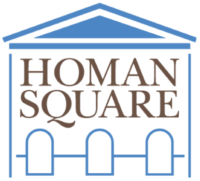The Homan Square community development effort began in 1988 when Sears, Roebuck and Company chairman, Ed Brennan, approached developer Charlie Shaw about prospects for redeveloping the site of the original Sears headquarters on Chicago’s West Side. The 55-acre property included the infamous Sears Catalog Facility, the largest wood-frame structure in the world before it was demolished; the original “Sears Tower,” a 14-story office building; and the coal-fired power plant that once provided electricity to the Sears facilities. Since the redevelopment efforts started, each of these sites and others have been re-purposed into community assets that include a community center, a high school, and more than 350 units of affordable housing.
The Foundation for Homan Square (formerly the Homan Arthington Foundation) was formed in 1995 to oversee these developments. Today, we continue to serve as an umbrella organization for the entities on the Homan Square Campus and as a lead organizer to further develop properties in the area.
Learn more about the history of different developments managed by the Foundation for Homan Square:
Also Learn more about the history of the people and properties behind these developments:
Affordable Housing
No one had pursued building new homes in North Lawndale since the riots following Dr. King’s assassination. With declining job markets and limited housing options, the neighborhood lost many of its middle-class families. New housing was needed both to provide quality housing for lower-income residents, and to attract middle-income families back to the neighborhood. Long-term economic stability required a mixed-income housing market.
In 1993, with the support of subsidies from the City of Chicago’s “New Homes for Chicago” program, the Shaw Company began constructing new single-family homes accessible to families with annual incomes as low as $35,000. Homes constructed in Phase I sold quickly. Phase II began immediately with a lower level of subsidy and slightly higher sales prices. Sales were also swift. The next phase of housing completed in 1999 was constructed without any subsidy. These units sold at market rates up to $185,000. All were quickly sold.
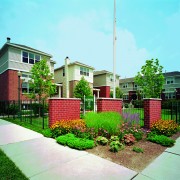 To accommodate those needing quality rental housing, the Shaw Company constructed 150 brand new rental units. Once completed, they were also quickly occupied. Because of the ongoing demand for quality rental housing, in 2011, the Shaw Company completed 42 additional units of affordable rental units. Homan Square had achieved its goal of a 50/50 mix of rental and owner-occupied mixed-income housing. More importantly, 350 families now called Homan Square home. Many of the original owners still live at Homan Square and manage the development through the Homan Square Homeowners Association.
To accommodate those needing quality rental housing, the Shaw Company constructed 150 brand new rental units. Once completed, they were also quickly occupied. Because of the ongoing demand for quality rental housing, in 2011, the Shaw Company completed 42 additional units of affordable rental units. Homan Square had achieved its goal of a 50/50 mix of rental and owner-occupied mixed-income housing. More importantly, 350 families now called Homan Square home. Many of the original owners still live at Homan Square and manage the development through the Homan Square Homeowners Association.
Office Space
Long-term success for a community depends on more than new housing alone. Everyone knew that attracting new businesses and creating a positive climate for commerce was essential. The former Sears administration building was converted to office and commercial space for nonprofits and small businesses.
Community Center
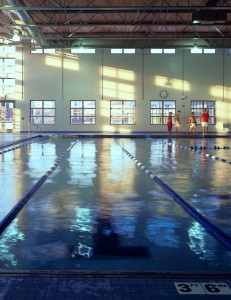 Another piece of the original Homan Square vision was to address a decades-long desire of community leaders for a comprehensive recreation, health and family center. With numerous efforts promised and hopes dashed, it was essential that this component be done, done right, and done in close partnership with community residents.
Another piece of the original Homan Square vision was to address a decades-long desire of community leaders for a comprehensive recreation, health and family center. With numerous efforts promised and hopes dashed, it was essential that this component be done, done right, and done in close partnership with community residents.
An advisory committee of local residents, the Community Center Advisory Council, was formed and a small group of potential service providers recruited to begin making plans. Once an initial plan was developed, a fundraising committee was formed from the top-tier of Chicago civic leaders. These individuals joined neighborhood leaders in launching what became a $28.7 million fund raising effort.
At the same time, great pains were taken to recruit the finest providers of recreation, health and social services in Chicago. Family Focus, Lawndale and the North Lawndale YMCA were in from the start. Lawndale Christian Health Center came on board with a perfect match of primary medical care services and a commitment to treating everyone, even the uninsured. Ties between neighborhood schools and service providers led to discussions with the Hinsdale-based Robert Crown Center for Health Education and an eventual agreement to join the team.
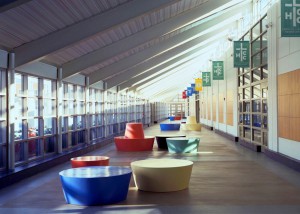 Finally, the Chicago Park District and City of Chicago anchored the entire endeavor when Mayor Daley committed to a $15 million facility and full Park District programming. When the Park District declared its intention to construct an indoor swimming pool and gymnasium, the deal was sealed.
Finally, the Chicago Park District and City of Chicago anchored the entire endeavor when Mayor Daley committed to a $15 million facility and full Park District programming. When the Park District declared its intention to construct an indoor swimming pool and gymnasium, the deal was sealed.
More important than the enormous skills and experience of each individual provider is their desire to collaborate with one another to offer residents unparalleled access to the best health, family, education, and recreation services in Chicago.
Construction began in fall of 1999 and was completed in December of 2001. The long-delayed dream was finally a vital reality. Now more than 6,000 visitors come to the Center for recreation or programs each week. Homan Square Campus service providers have created partnerships and an interlocking network of services that provided comprehensive care, from general dentistry to parenting classes. An expecting mother can get prenatal care at Lawndale Christian Health Center and enroll in parenting classes at Family Focus. As each provider has grown their services, they have also extended their collaboration out into the community to serve more residents.
Schools
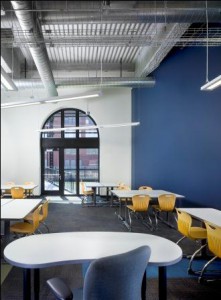 The next wave of development centered on education, a component not included in the original vision.
The next wave of development centered on education, a component not included in the original vision.
Holy Family Lutheran School broke ground at the foot of the original Sears Tower in the spring of 2007 on a 45,000-square-foot, Pre-K through 8th grade school to serve low-income students.
In the fall of 2009, a new high school opened inside the former power house. The $45 million restoration blends historic preservation and cutting-edge sustainable technologies. Original building features were retained to preserve a connection to the building’s past. A geothermal heating and cooling system and other energy efficiency measures make the building a candidate for the highest green building certification. The building is named the Charles H. Shaw Technology and Learning Center. The first school to open there was the Henry Ford Academy: Power House High School, which opened to 250 9th and 10th grade students in fall of 2009. A few years later, a new school began operating there — DRW College Prep, part of the Noble Network of Charter Schools.
The restoration received the “Project of the Year” award from the Landmarks Illinois Driehaus Preservation Awards and is poised to receive further recognition for sustainable design, historic preservation, and community redevelopment.
Both Holy Family Ministries and DRW College Prep further the Homan Square tradition of excellence and help to meet a vital community need for high-quality education. They represent the latest step in the long journey from vacancy to vibrancy in North Lawndale.
Charles H. Shaw
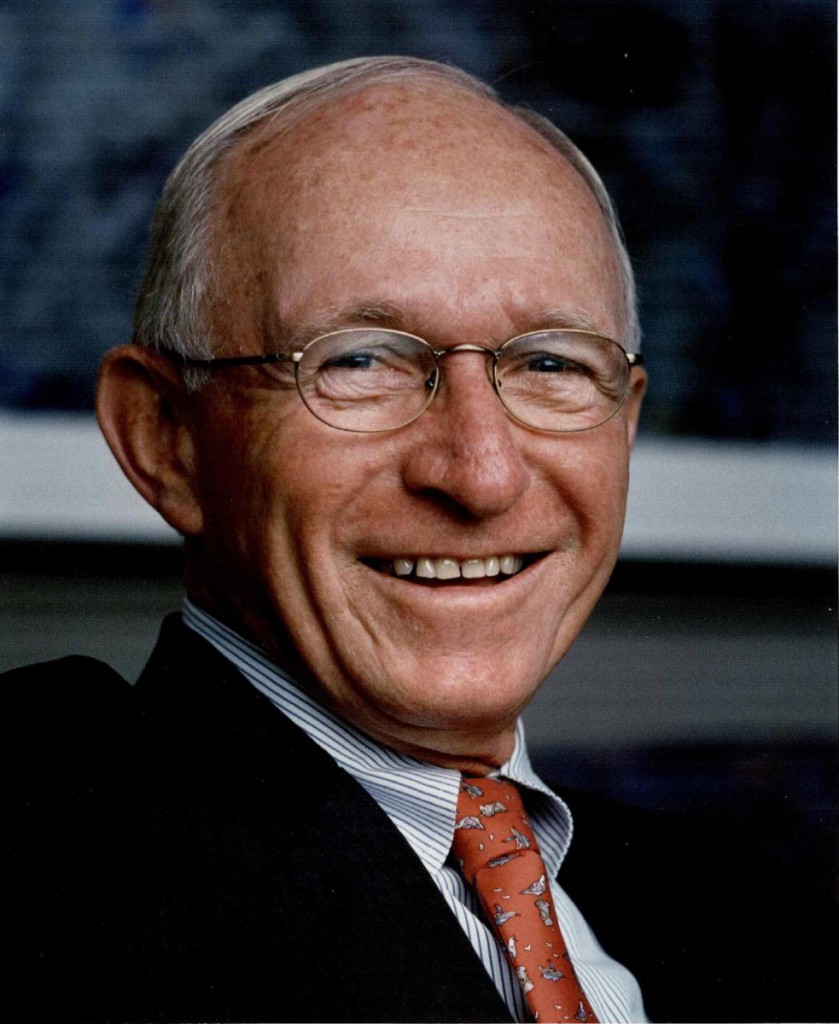 Charlie Shaw always said that the job of a developer was not to build buildings, but to create environments where people worked and lived. Homan Square was the clearest example of that guiding philosophy in his distinguished career.Shaw was a real estate developer whose projects and leadership made a lasting impact both on Chicago’s skyline and its poorest neighborhood. A Brooklyn, New York native, Shaw came to Chicago to develop Lake Point Tower, the tallest residential development in the nation when it was completed in 1968. Chicago Mayor Richard J. Daley’s encouraging remarks at the groundbreaking convinced him that Chicago was the place for him to make his mark.His firm, The Shaw Company, grew into a successful real estate development company with a reputation for tackling difficult mixed-use projects. The Shaw Company was responsible for the $180 million Chicago Hilton and Towers restoration, which sparked neighborhood development in Chicago’s South Loop. In New York, his innovative use of air rights allowed the Museum of Modern Art to accomplish a much needed expansion while constructing the Museum Tower Condominiums.One of his most beloved projects was the Homan Square redevelopment in Chicago’s North Lawndale neighborhood. Shaw spearheaded a public/private/community partnership to transform the original Sears, Roebuck and Co. world headquarters into an anchor for redevelopment on the city’s far West Side. Homan Square’s comprehensive approach and successful mixed-income housing development was recognized as a national model for urban revitalization. He personally led the fund raising campaign to build the $30 million, award-winning Homan Square Community Center to serve the health, education and recreation needs of underserved local residents.Homan Square brought together all of Charlie’s greatest strengths. His visionary leadership recognized the potential of places and project others could more easily ignore. North Lawndale had definitely been overlooked for decades. Charlie also believed in working in collaboration with residents and those directly affected by a project to create a winning result for everyone. Homan Square exemplifies that win-win approach.More than a developer, Shaw was a committed civic and industry leader. He was a director of Harris Bancorp and Harris Trust & Savings Bank. He served as a trustee of Northwestern University, Rush University Medical Center, Illinois Institute of Technology, and as a director of The Rehabilitation Institute of Chicago. He was also active in the Economic Club of Chicago as well as the Financial Research and Advisory Committee and the Civic Committee of the Commercial Club. Shaw furthered his commitment to revitalizing underserved communities as an active leader of the Urban Land Institute, serving for several years as President.
Charlie Shaw always said that the job of a developer was not to build buildings, but to create environments where people worked and lived. Homan Square was the clearest example of that guiding philosophy in his distinguished career.Shaw was a real estate developer whose projects and leadership made a lasting impact both on Chicago’s skyline and its poorest neighborhood. A Brooklyn, New York native, Shaw came to Chicago to develop Lake Point Tower, the tallest residential development in the nation when it was completed in 1968. Chicago Mayor Richard J. Daley’s encouraging remarks at the groundbreaking convinced him that Chicago was the place for him to make his mark.His firm, The Shaw Company, grew into a successful real estate development company with a reputation for tackling difficult mixed-use projects. The Shaw Company was responsible for the $180 million Chicago Hilton and Towers restoration, which sparked neighborhood development in Chicago’s South Loop. In New York, his innovative use of air rights allowed the Museum of Modern Art to accomplish a much needed expansion while constructing the Museum Tower Condominiums.One of his most beloved projects was the Homan Square redevelopment in Chicago’s North Lawndale neighborhood. Shaw spearheaded a public/private/community partnership to transform the original Sears, Roebuck and Co. world headquarters into an anchor for redevelopment on the city’s far West Side. Homan Square’s comprehensive approach and successful mixed-income housing development was recognized as a national model for urban revitalization. He personally led the fund raising campaign to build the $30 million, award-winning Homan Square Community Center to serve the health, education and recreation needs of underserved local residents.Homan Square brought together all of Charlie’s greatest strengths. His visionary leadership recognized the potential of places and project others could more easily ignore. North Lawndale had definitely been overlooked for decades. Charlie also believed in working in collaboration with residents and those directly affected by a project to create a winning result for everyone. Homan Square exemplifies that win-win approach.More than a developer, Shaw was a committed civic and industry leader. He was a director of Harris Bancorp and Harris Trust & Savings Bank. He served as a trustee of Northwestern University, Rush University Medical Center, Illinois Institute of Technology, and as a director of The Rehabilitation Institute of Chicago. He was also active in the Economic Club of Chicago as well as the Financial Research and Advisory Committee and the Civic Committee of the Commercial Club. Shaw furthered his commitment to revitalizing underserved communities as an active leader of the Urban Land Institute, serving for several years as President.
Sears, Roebuck and Co.
Founded in 1893, Sears, Roebuck and Co. was the country’s largest mail order concern by 1900. In 1904 Sears, Roebuck and Company purchased 4l.6 acres on Chicago’s west side and commissioned the architectural firm of Nimmons and Fellows to design a plant. The Thompson-Starrett Company received the construction contract, and ground was broken on January 24, 1905. The proposed complex was “so large that they were compelled to ask the City Council of Chicago to close certain streets so that they might build over them. Since its construction in 1905-6, the Sears, Roebuck and Co. Complex was symbolic of the company’s dominance of the mail order industry. The complex contained the printing plant that for many years produced the Sears Catalog, the company’s principal selling instrument; the nine-story Mail Order Plant whose 3 million square feet of floor space made it the world’s largest business building at the time; the one-story Power Plant which provided heating and cooling for the entire complex; and the original Sears Tower.
Seven thousand men were hired for the project, and each day 60 freight car loads of building materials were used. Eventually, 23 million brick and almost 15 million feet of lumber were consumed in the completing the project. By October 1906 the Mail Order Plant was complete, and on January 22, 1906, the company transferred its entire operations to the new facility. In later years, Sears added to the complex a merchandise manufacturing facility, a sunken garden, parking decks and lots, an automotive center, an Allstate Insurance Building, a distribution facility, a construction and display building, and numerous support structures. Until 1973, when the 110-story Sears Tower, the world’s tallest building, was completed in downtown Chicago, the Sears, Roebuck and Co. Complex served as the firm’s headquarters.
Of the original 41.6-acre complex, an area of 16 acres was declared a National Historic Landmark in 1978. The Mail Order Plant was demolished except for the tower to make way for the Homan Square Community Center Campus.
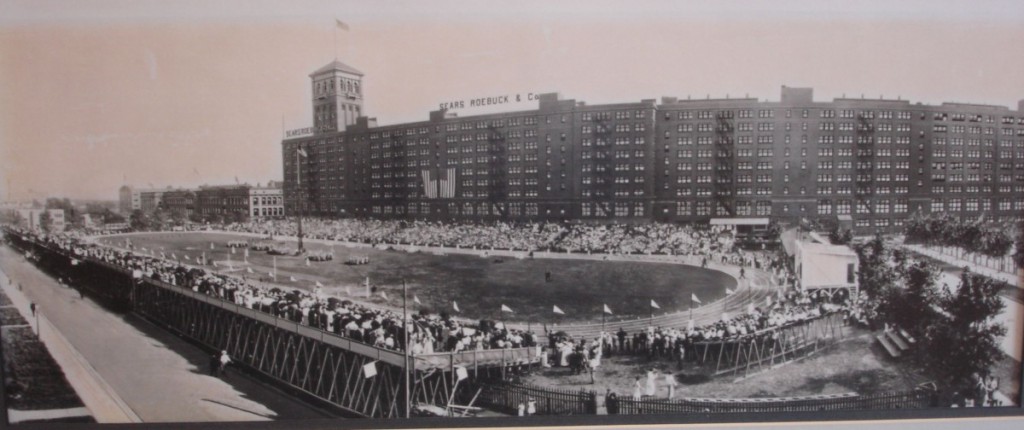 In the 1920s extensive athletic facilities were added and athletic field events. They encouraged after-work socialization to keep high morale among their employees. Included were a clubhouse and tennis courts, and the Sears Department of the YMCA. Events included an annual track and field competitions, and company baseball teams.
In the 1920s extensive athletic facilities were added and athletic field events. They encouraged after-work socialization to keep high morale among their employees. Included were a clubhouse and tennis courts, and the Sears Department of the YMCA. Events included an annual track and field competitions, and company baseball teams.
By 1926, the first ground level parking lots replaced the athletic fields. This happened at the same time that a strategic shift from catalog sales to retail stores had started with easy auto travel making travel to a store more practical. The first Sears retail store opened in Chicago on February 2, 1925 in the Merchandise building. This store included an optical shop and a soda fountain.Sears created their own services for effective use, much advanced beyond what was required at the time: a company fire department, with volunteer firemen, and early use of fire sprinklers; 200,000 gallon water tank, water use and fire prevention purposes; newspaper publicity office; testing laboratory for new products; cafeteria – originally men and women were separated, and multiple levels of service for all employee lunch and breakfast; and the Sears Bank – services for employees on site. The electricity supplied by the power house operated the ventilating system, escalators, and transmission belts for carrying merchandise between the stock departments and the shipping departments. Over nine miles of pneumatic tubing quickly transported letters and other papers from one department to another.
Richard W. Sears, founder of the company, aptly called it a “city within a city.”
The Original ‘Sears Tower’
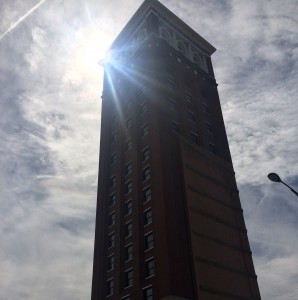
This original 14-story Sears Tower, constructed as part of the Sears Catalog Facility, provided management offices, an observation deck and circulation among floors for many of Sears’ 22,000 employees. The Tower dates back to 1906 and was once home to the radio station WLS — World’s Largest Store. In 1974, Sears moved its offices to the Loop, and in 1987, closed down the distribution facility.
Today, the Tower is listed on the National Register of Historic Places and is now the John D. and Alexandra C. Nichols Tower. The Nichols’ generosity supported substantial renovation of the Tower and is once again ready to actively contribute to the economic, educational and cultural life of North Lawndale. A longtime beacon of hope and opportunity, the Tower has remained silent and empty as schools, a community center and new homes sprung up around it. The beacon is now poised to become a hub. Find out more about the Nichols Tower.
Sears Power House
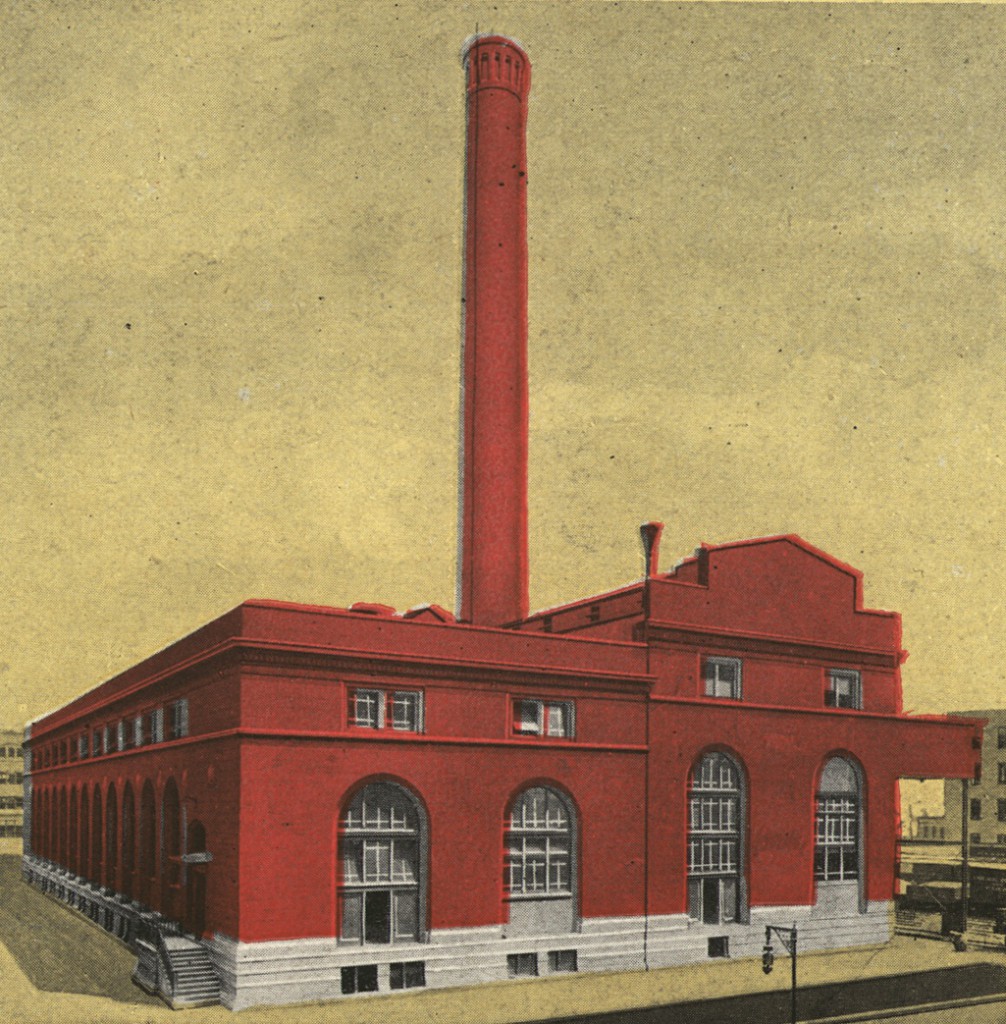 Completed in 1905 as one of four main buildings of the George C. Nimmons designed Sears, Roebuck and Co. complex (listed on the National Register of Historic Places in 1978), the Power House powered the massive 55-acre Sears complex until the company’s 1973 relocation to the Sears Tower in downtown Chicago. Minimal operations continued until 2004, when the Power House was fully decommissioned; vacant and deteriorating, becoming a classic “white elephant” building with limited reuse.
Completed in 1905 as one of four main buildings of the George C. Nimmons designed Sears, Roebuck and Co. complex (listed on the National Register of Historic Places in 1978), the Power House powered the massive 55-acre Sears complex until the company’s 1973 relocation to the Sears Tower in downtown Chicago. Minimal operations continued until 2004, when the Power House was fully decommissioned; vacant and deteriorating, becoming a classic “white elephant” building with limited reuse.
What began as a simple quest to determine the best use for an empty building, turned into a grand plan for reclaiming a chunk of Chicago history by offering brighter futures to kids in a tragically underserved neighborhood.
 The Charles H. Shaw Technology and Learning Center is now home to DRW Noble Charter School. A $40 million restoration and historic preservation effort resulted in a LEED Platinum certified historic structure that now operates as a modern public charter high school.
The Charles H. Shaw Technology and Learning Center is now home to DRW Noble Charter School. A $40 million restoration and historic preservation effort resulted in a LEED Platinum certified historic structure that now operates as a modern public charter high school.
Historic preservation features include a restored chimney, restored windows and doors, and the retention of original power generating machinery. Green features include a geothermal heating and cooling system, an overall water conservation and management system, as well as lighting controls and energy-efficient sky-lights.
